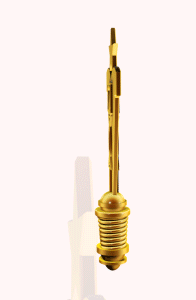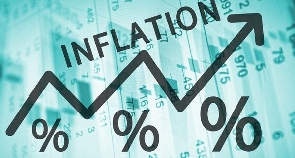For a second straight month, the mining and quarrying sub-sector has been the lead driver of producer inflation, as the index in the month of May 2020 recorded an increase to 8.4 percent, data from the Ghana Statistical Service (GSS) has shown.
This rate represents a 1.0 percentage point increase in producer inflation relative to the rate recorded in April 2020 at 7.4 percent.
During the month, the manufacturing sub-sector, which constitutes more than two-thirds of total industry, also contributed marginally to the increase in the all industry rates.
The producer price inflation in the Mining and Quarrying sub-sector increased by 4.5 percentage points over its April 2020 rate of 38.0 percent to record 42.5 percent in May 2020, whereas the producer inflation for Manufacturing increased by 0.6 percentage points to record 1.1 percent.
The Producer Price Index (PPI) measures the average change over time in the prices received by domestic producers for the production of their goods and services.
Undoubtedly, the continuous increase in demand for gold as a safe haven with regards to value, has been a key contributor to the rates upsurge for May 2020.
The Government Statistician, Professor Samuel Kobina Annim affirmed this, saying, “The increase in the Mining and Quarrying inflation rate from 38.0 percent in April 2020 to 42.5 percent in May 2020 was as a result of increases in the price of gold in May 2020 and the depreciation of the local currency.”
Amidst the coronavirus pandemic, the World Gold Council have affirmed that, in the short-term there is risk and uncertainty, where market downturns often boost investment demand for gold as a safe haven asset.
Further to this, the Council stated that opportunity cost representing the perceived relative value of competing assets including bonds (interest rates) and currencies, influence investor attitudes towards gold. More often than not, three variables capture this theme in the form of the nominal 10-year U.S. Treasury bond yields, a developed market currency index and an emerging market currency index.
The price of gold on the international market rose from about US$ 1,702.75 per ounce on April 30, 2020 to US$ 1,717 per ounce as at May 28, 2020. The commodity was trading at US$ 1,724.35 per ounce as at June 17, 2020.
For the Manufacturing sector, the Government Statistician said, “The marginal increase in the manufacturing sector inflation rate from 0.5 percent in April 2020 to 1.1 percent in May 2020 was as a result of increases in an inflation rate for the manufacture of other non-metallic minerals products from 9.9 percent in April 2020 to 12.7 percent in May 2020.”
Trends
In May 2019, the producer price inflation rate for all industry was 6.7 percent. The rate then increased consistently to record 10.2 percent in August 2019 but declined to 8.9 percent in October 2019. The rate then increased again continuously to record 14.5 percent in January 2020 but thereafter declined to record 6.8 percent in March 2020. However, the rate increased again to record 8.4 percent in May 2020.
Click to view details



Business News of Friday, 19 June 2020
Source: goldstreetbusiness.com

















